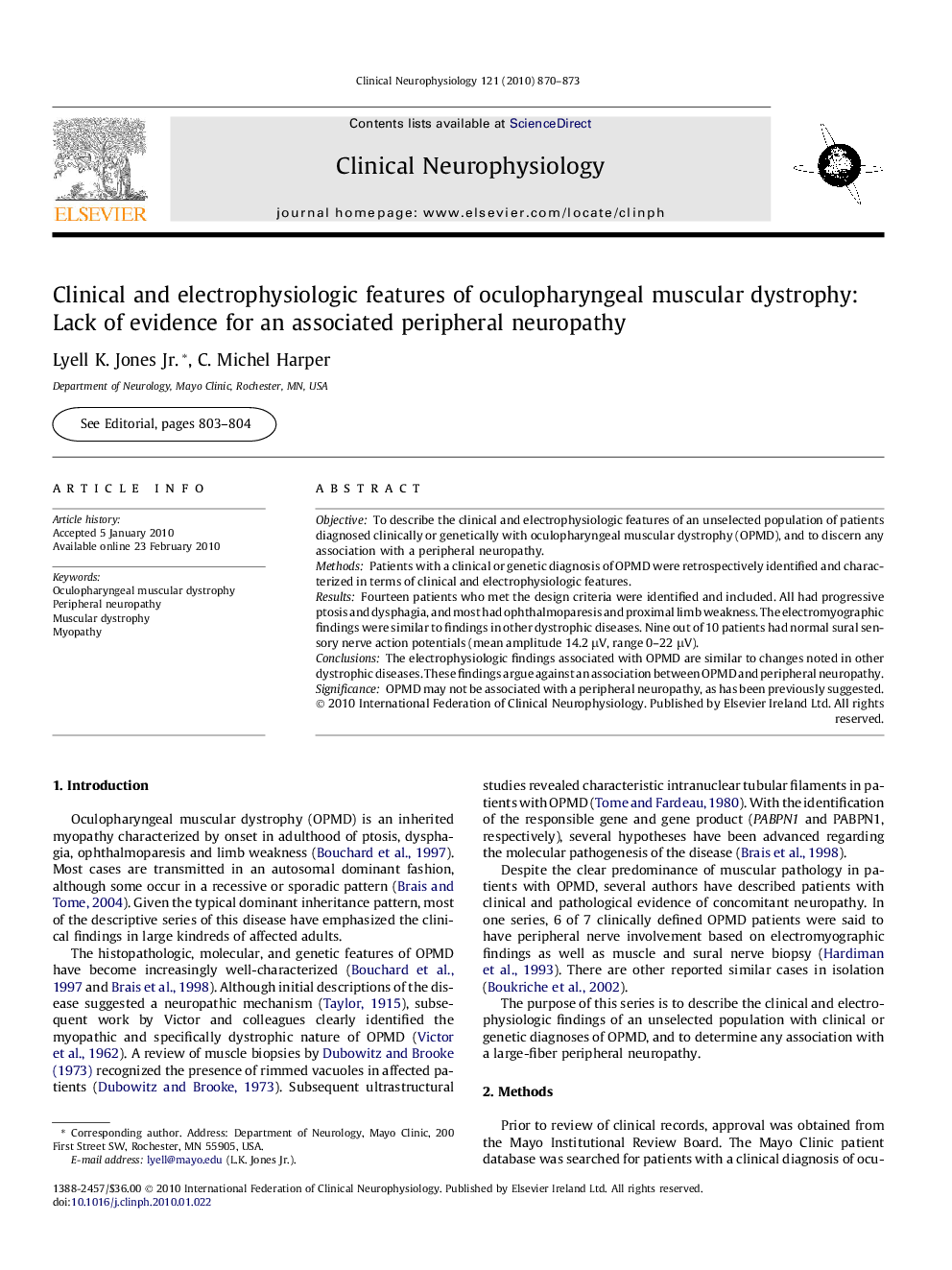| Article ID | Journal | Published Year | Pages | File Type |
|---|---|---|---|---|
| 3045680 | Clinical Neurophysiology | 2010 | 4 Pages |
ObjectiveTo describe the clinical and electrophysiologic features of an unselected population of patients diagnosed clinically or genetically with oculopharyngeal muscular dystrophy (OPMD), and to discern any association with a peripheral neuropathy.MethodsPatients with a clinical or genetic diagnosis of OPMD were retrospectively identified and characterized in terms of clinical and electrophysiologic features.ResultsFourteen patients who met the design criteria were identified and included. All had progressive ptosis and dysphagia, and most had ophthalmoparesis and proximal limb weakness. The electromyographic findings were similar to findings in other dystrophic diseases. Nine out of 10 patients had normal sural sensory nerve action potentials (mean amplitude 14.2 μV, range 0–22 μV).ConclusionsThe electrophysiologic findings associated with OPMD are similar to changes noted in other dystrophic diseases. These findings argue against an association between OPMD and peripheral neuropathy.SignificanceOPMD may not be associated with a peripheral neuropathy, as has been previously suggested.
